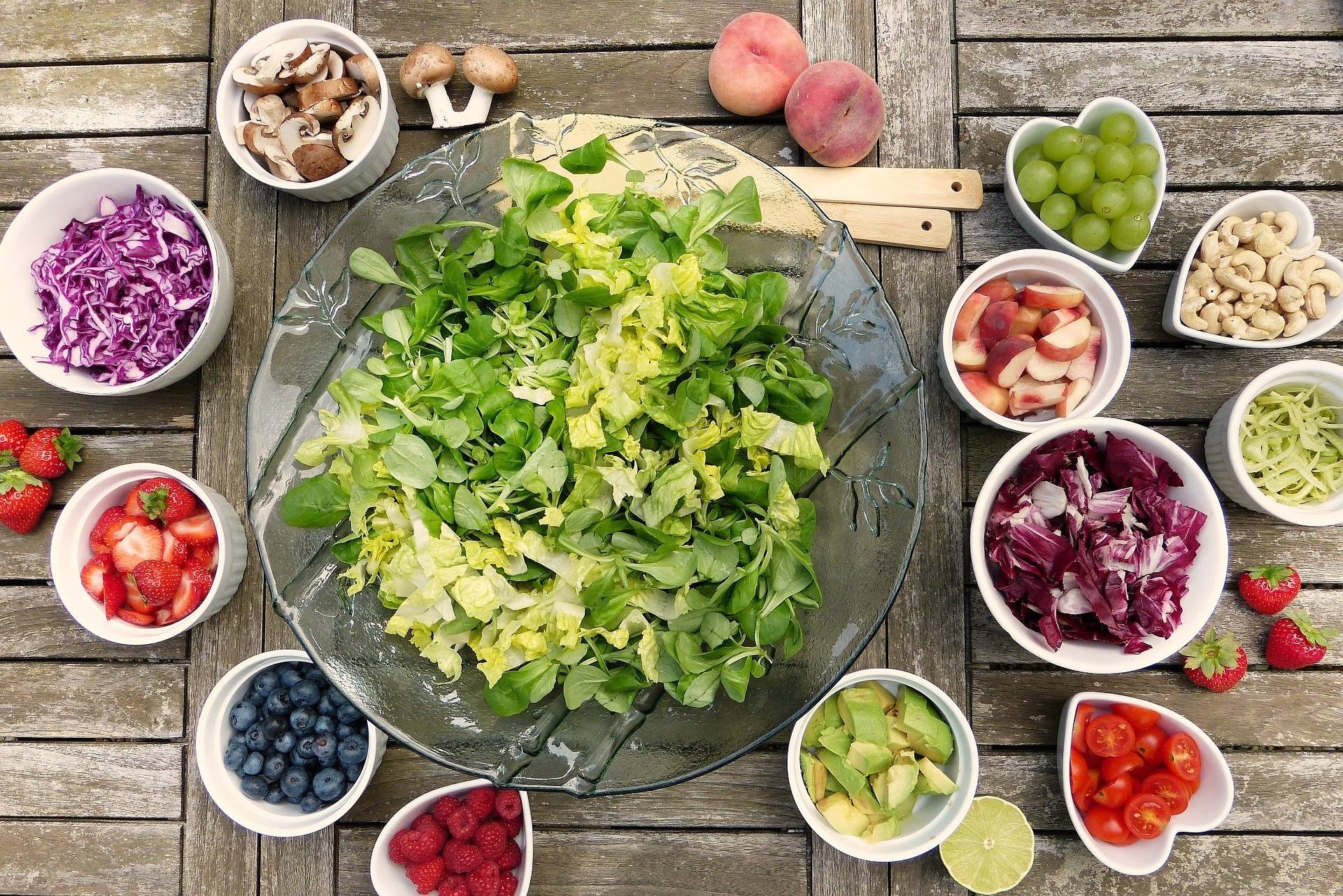
Foods that are rich in nutrients, or foods with many nutrients per calorie, are important for seniors. These meals should contain minimally processed food and not be processed. They should also increase their activity levels, especially if they are inactive. Now, exercise is a part of the national food guidance system. Here are some ideas to increase the amount of physical activity you do each day. These suggestions will assist older adults in eating balanced, healthy meals.
Healthy eating habits include eating low-calorie and high-nutrient foods. These foods have lower calories and fewer calories than high-calorie alternatives. These foods contain vitamins, minerals as well as lean protein and healthy fats. These food groups are ideal for the heart, and are rich in fiber. It may be difficult to eat all of these food if you are vegetarian.

It's easy to recognize foods high in nutrients with Dietitian-approved thumbs. These simple labels let you know if the product is nutritionally dense. The tag will often include an acronym that indicates the origin of the food. A label like the Dietitian Approved Tumbs makes it easier for shoppers to find healthy choices. These labels also include information about the nutritional content of the product.
Superfoods include food that is able to meet specific nutritional requirements. Although they don't have to be regulated or structured in any way, superfoods are loaded with powerful healing properties and antioxidants. The anti-inflammatory properties of turmeric may help fight off certain illnesses. Omega-3 fatty acids are also found in superfoods, which have been shown increase lipid metabolism and lower cholesterol. This article will also discuss micronutrients as well as their respective micronutrient densities.
Supplemental foods may not be very rich in nutrients but can provide energy as well as non-essential nutrients. They can contribute to the diversity of complementary feeding diets in South and Southeast Asia. These foods are high in fiber and low-fat. They are also very nutrient-dense, which can be crucial for good health. A diet rich in fiber is essential for promoting good digestion. A wide range of fruits and vegetables is also recommended.

Vegetables have a high level of vitamins and minerals. They can also be used as an alternative to animal proteins. Vegetables are high in nutrition, low-calorie, and contain a variety of essential vitamins. They are also good for the immune system and basic cell metabolism. Compared to meat, vegetables are a great source of fiber. Some vegetables even have high levels of protein. However, if you're unable to eat meat or dairy then choose vegetables.
These ASFs are extremely rich in nutrients. These ASFs are a great way for you to include more of these foods in your diet. They are easy to integrate into your diet, and they're very convenient. They're also high in antioxidants, which helps fight disease. The food pyramid is a great way to increase your intake. This is a good place for you to start if you want to nourish your body.
FAQ
Why is it so important to lead a healthy lifestyle
Healthy living can lead to a longer, more fulfilling life. A healthy diet, regular exercise, good sleep habits, and stress management will help prevent diseases like heart disease, diabetes, cancer, and stroke.
A healthy lifestyle will also improve our mental health by helping us cope better with everyday stresses. A healthy lifestyle can also help you feel and look younger.
Are there 5 ways to have a healthy lifestyle?
Living a healthy lifestyle includes eating right, exercising regularly, getting enough sleep, managing stress, and having fun! Good eating habits include avoiding processed foods, sugar, unhealthy fats, and avoiding junk food. Exercise is good for your body and muscles. Getting enough sleep improves memory and concentration. Stress management is a way to reduce anxiety levels and depression. Fun keeps us vibrant and young.
What are 10 healthy behaviors?
-
Get breakfast every morning.
-
Don't skip meals.
-
Maintain a balanced diet.
-
Drink lots of water.
-
Take good care of your body.
-
Get enough sleep.
-
Stay away from junk foods.
-
Do some exercise every day.
-
Have fun
-
Meet new people.
What is the best way to live a healthy lifestyle?
You can live a healthier lifestyle if you eat healthy food and exercise regularly. These guidelines will help you live a long, healthy life.
Small changes to your diet or exercise routine can help you start losing weight. You can lose weight by walking 30 minutes each day if you are looking to lose weight. You can also take up dancing or swimming if you are looking to be more active. A Fitbit or Strava online program that tracks your activity can be joined.
How can I lower my blood pressure
It is important to first understand what high blood pressure is. Next, you will need to determine what is causing high blood pressure. This could include eating less salt, losing weight if necessary, taking medication, etc.
You also need to make sure you are getting enough exercise. Walking is a great alternative if you don't have the time or energy to exercise regularly.
You should join a gym if you are unhappy with your exercise routine. You'll probably want to join a gym where there are other people who share your goals. You will find it easier to keep to a workout schedule if you have someone to watch you at the gym.
What should you eat?
You should eat lots of vegetables and fruits. These vegetables and fruits are rich in vitamins and minerals that will keep your immune system strong. Also, fruits and vegetables are rich in fiber. This makes them filling as well as helping with digestion. You should eat at least five servings per day of fruit or veg.
You should also drink lots of water. Water flushes toxins from your body and helps you feel full between meals. Drink about eight glasses each day.
Refined grains should be replaced with whole grains. Whole grains contain all of their nutrients, including B vitamins and iron. Refined grains have been stripped of some of their nutrition.
Sugary drinks should be avoided. Sugary drinks are loaded with empty calories and contribute to obesity. Choose water, milk or unsweetened tea instead.
Avoid fast food. Fast food has little nutritional value. It may taste great but it won't give you the energy you need to function properly. Stick to healthier options such as salads, soups, sandwiches, and pasta dishes.
Limit your alcohol consumption. Avoid alcohol as it can cause empty calories and poor nutrition. Limit your intake to two alcoholic drinks per week.
Red meats should be avoided. Red meats can be high in cholesterol and saturated fat. Lean cuts of beef or pork, lamb and chicken, as well as fish, are better choices.
What are the ten best foods to eat in America?
These are the 10 best foods you can eat:
-
Avocados
-
Berries
-
Broccoli
-
Cauliflower
-
Eggs
-
Fish
-
Grains
-
Nuts
-
Oats
-
Salmon
Statistics
- According to the 2020 Dietary Guidelines for Americans, a balanced diet high in fruits and vegetables, lean protein, low-fat dairy and whole grains is needed for optimal energy. (mayoclinichealthsystem.org)
- This article received 11 testimonials and 86% of readers who voted found it helpful, earning it our reader-approved status. (wikihow.com)
- nutrients.[17]X Research sourceWhole grains to try include: 100% whole wheat pasta and bread, brown rice, whole grain oats, farro, millet, quinoa, and barley. (wikihow.com)
- WHO recommends consuming less than 5% of total energy intake for additional health benefits. (who.int)
External Links
How To
What does the "vitamins” word mean?
Vitamins are organic compounds that can be found in foods. Vitamins are essential for our bodies to absorb nutrients from the foods we eat. The body cannot make vitamins; therefore, they must be obtained from food.
There are two types if vitamins: water soluble, and fat soluble. Water-soluble vitamins dissolve in water easily. Some examples include vitamin C,B1 and B2 vitamins (thiamine), B2 and riboflavin, B3 and B6 vitamins (niacin), folic acids, biotin, pantothenic acids, and cholesterol. Fat-soluble vitamins are stored in the liver, fatty tissue and kidneys. Examples include vitamin D, E, K, A, and beta carotene.
Vitamins are classified according to their biological activity. There are eight major categories of vitamins.
-
A - Essential for healthy growth and health maintenance.
-
C is important for nerve function and energy production.
-
D - Vital for healthy bones and teeth
-
E is needed for good reproduction and vision.
-
K - required for healthy muscles and nerves.
-
P - Essential for strong bones and teeth.
-
Q – aids digestion of iron and iron absorption
-
R – Required for the formation of red blood vessels.
The recommended daily intake (RDA), of vitamins varies with age, gender and physical condition. The U.S. Food and Drug Administration (FDA) sets the RDA values.
For adults 19 years and over, the RDA of vitamin A is 400mg per day. However, pregnant women need 600 micrograms per day because it is important for fetal development. Children ages 1-8 require 900 micrograms per day. For infants younger than one year, 700 micrograms are required daily. However, this number drops to 500 micrograms each day for children aged 9-12 months.
Children between the ages of 1-18 need 800 micrograms per daily for obesity, while children overweight require 1000 micrograms. Children underweight or obese will need 1200 mg per day.
2200 mg of vitamin A per day is required for children aged 4-8 who have been diagnosed by anemia.
2000 micrograms per person is necessary for general health. Women who are pregnant or breastfeeding need 3000 micrograms per day due to increased nutrient requirements.
Adults over 70 years of age need 1500 micrograms per day since they lose about 10% of their muscle mass each decade.
Women who are pregnant or nursing need more than the RDA. Pregnant women need 4000 micrograms per dayduring pregnancy and 2500 micrograms per day after delivery. Breastfeeding mothers require 5000 micrograms daily when breast milk production is occurring.